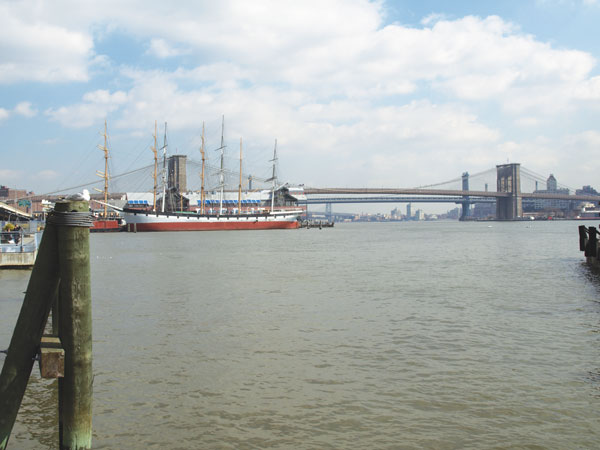Another year, another big plan to “save” the South Street Seaport.
Downtowners have coexisted with corporations running the Seaport mall for a few decades. There have been some good initiatives, and some great events, but the operators have never fully embraced the Lower Manhattan community.
The companies over the years have tried to make the area more attractive to residents, but have not yet succeeded.
There are malls all over the county, but what makes the Seaport special is its ties to early New York and the Fulton Fish Market, which did not leave all that long ago — and the South Street Seaport Museum with its historic ships decorating the harbor.
“It’s not just another mall on the waterfront,” is the way Catherine McVay Hughes, Community Board 1’s chairperson, put it.
Two weeks ago, the City Council voted to approve the Howard Hughes Corporation’s plan to redevelop the Pier 17 mall. There are clear, positive elements about the plan, but there is a lot to be concerned about too.
“Pier 17 and trust,” was the headline of our editorial one year ago, and the need to restore trust is much more pressing now.
The chief reason for that is the city Economic Development Corporation’s apparent decision to withhold important information from the public until after the Council vote.
Specifically, the unredacted portions of the letter of intent between the city and Hughes included the company’s intention to build a large apartment and hotel building near the pier.
The only defense we’ve heard for this contemptible decision to keep the public in the dark is essentially, “Big deal — everyone has known for years that there was a desire for big development.”
If everyone knew, what would have been the harm in releasing the full document?
General Growth Properties, Hughes’ predecessor, did make its development plans clear five years ago. Then it went bankrupt and reorganized as Howard Hughes Corp., so it was far from clear that anything had stayed the same.
There’s no question that if the full information had been made public earlier, it would have affected the debate at the very least, and perhaps even the outcome.
Clearly, the city and Hughes did not want to negotiate about anything other than Pier 17. We can’t help but wonder, though, if a tougher position would have won more.
And this would not have been the first time the city negotiated two land-use applications, known as ULURPs, simultaneously.
Councilmember Margaret Chin did win some concessions at Pier 17. One — like extending the leases of Pier 17 shops — was hard, but needlessly so. It’s just smart business to let the merchants sell through the busy summer season, before things close up for redevelopment. These stores were hard hit by Hurricane Sandy, which also should have made the decision easier to make.
We are also pleased to see that the agreement includes more public access on the roof of the new Pier 17, more boat mooring for the museum and two large, locally sourced food markets, with one expected to open next year.
The Council vote did put much more restrictive size limits on the New Market Building site, which is just outside the Seaport Historic District and which Hughes has an option on.
But with so little discussion about the zoning limit, we suspect those in the know have reason to expect an attempt to get approval to build bigger.
Hughes will have to go through the same review process regardless of whether it looks to build big or small.
It’s never too late to begin building trust. You do it by sharing your plans early and working with a community.


















